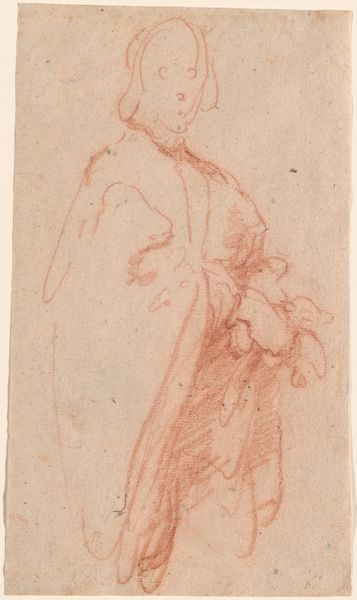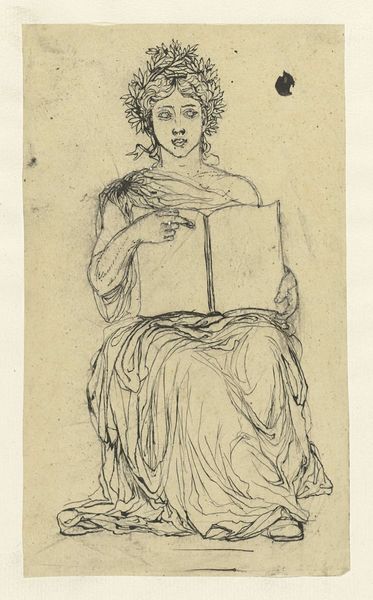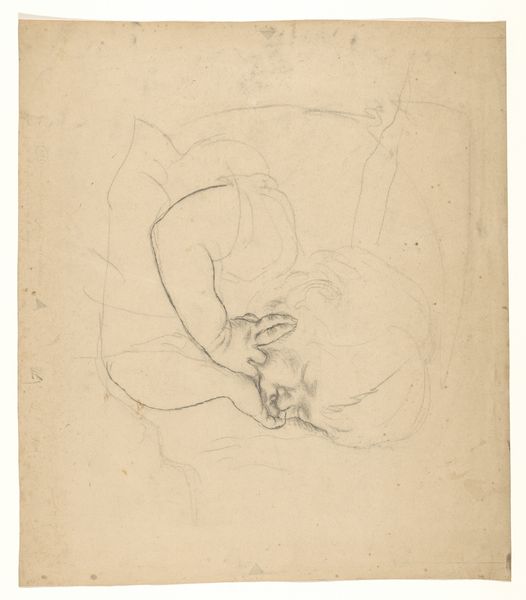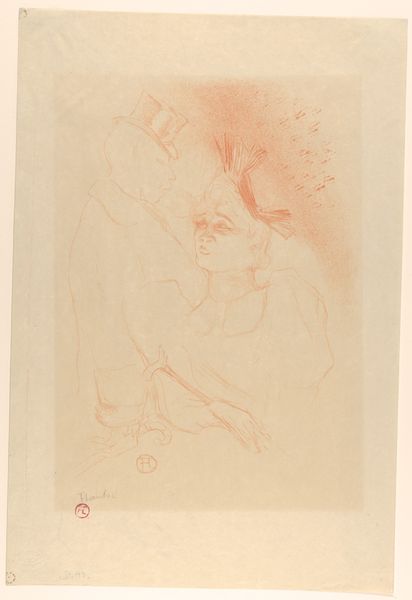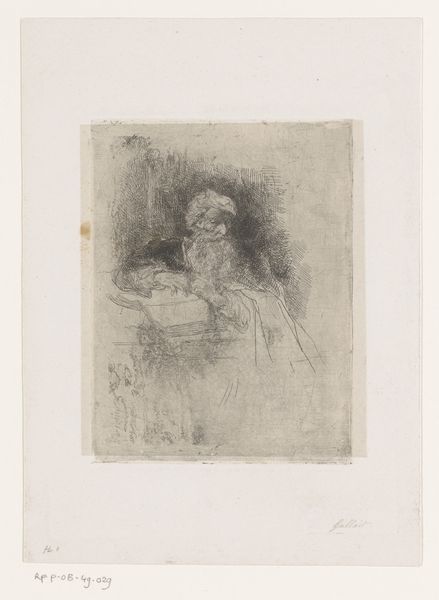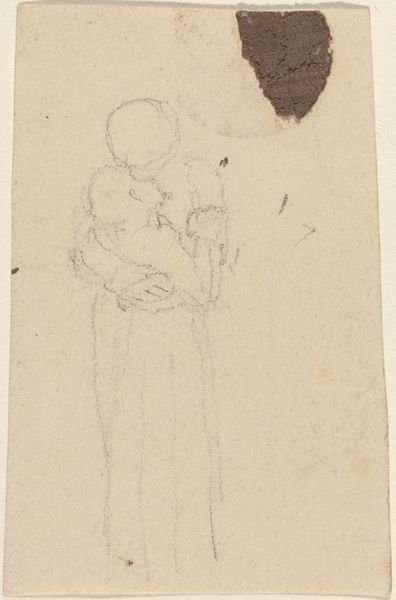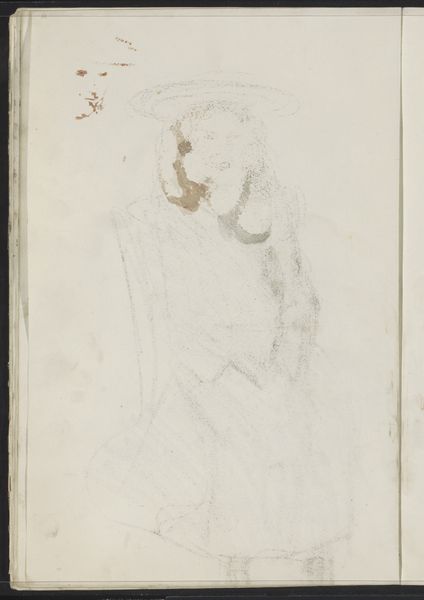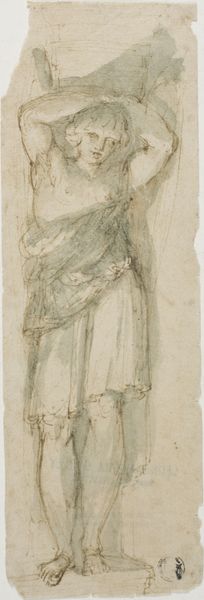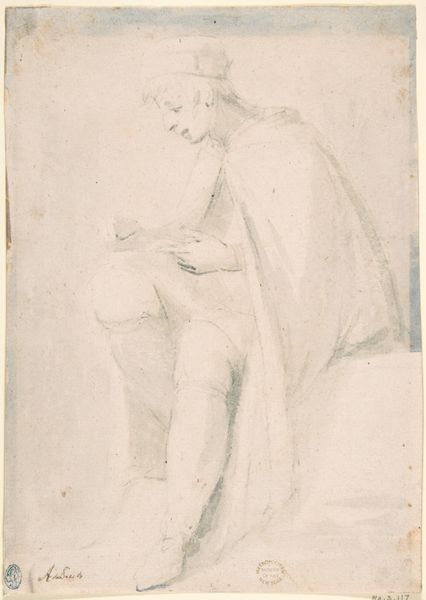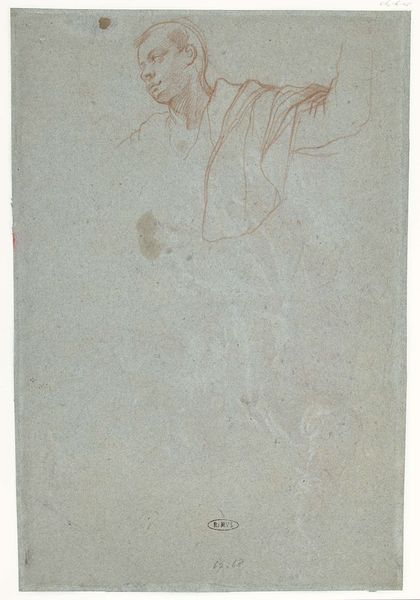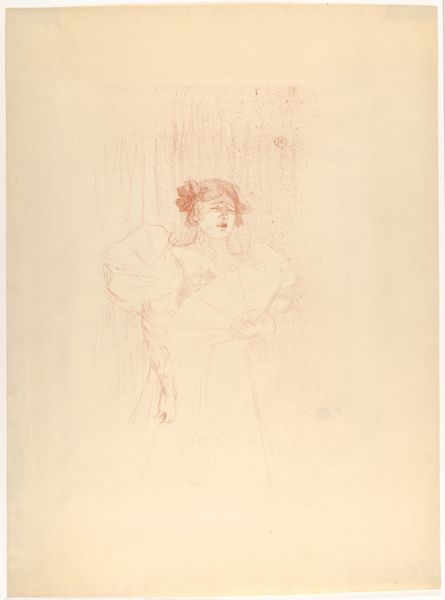
Dimensions: 198 × 149 mm (image/plate); 221 × 169 mm (sheet)
Copyright: Public Domain
Editor: Here we have Lepère's etching, "At the Wall, Commune Episode" from 1893. It’s a rather ghostly figure; what details do you notice that stand out? Curator: This print is intriguing because it embodies the violence of the Commune within its very materiality. Think about the acid biting into the copper plate to create this image – that destructive act mirrors the social and political upheaval. Consider, too, the labor involved in producing multiple prints. Who were the intended consumers, and what message were they meant to extract? Editor: That's fascinating; I hadn't thought about the connection between the artistic process and the subject matter itself. Could the relatively 'low' medium of printmaking also be significant? Curator: Precisely. Etchings, as relatively accessible multiples, bring to question the idea of ‘high art’ and democratize narratives previously guarded. How does that choice of material challenge existing power structures of artistic patronage? Editor: So the choice of printmaking made this imagery accessible to a broader audience, and in a way democratized this revolutionary moment? It's an interesting contrast with the typical elite consumption of art at the time. Curator: Yes, Lepère created many images representing Parisian life that reflect this very subject. Furthermore, who profited from the sales, and how does it relate to political leanings from that period? Editor: This definitely adds a deeper layer of understanding. Thanks for making me look past just the figure itself. Curator: Of course. Remember, art is rarely detached from the material conditions of its creation and consumption.
Comments
No comments
Be the first to comment and join the conversation on the ultimate creative platform.
